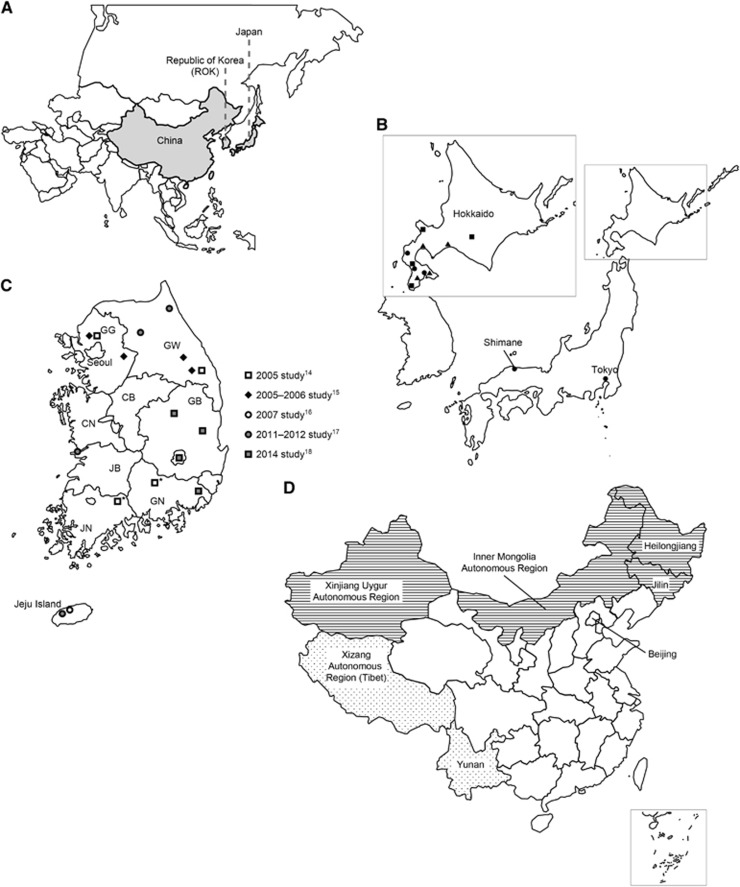Figure 1.
Epidemic regions of tick-borne encephalitis virus and/or tick-borne encephalitis in Far-Eastern Asia, China, the Republic of Korea and Japan. (A) Map of Asia. Countries of interest, that is, China, Republic of Korea and Japan, are shaded in gray. (B) Geographic locations of epizootiological survey sites, showing tick-borne encephalitis virus prevalence in Japan. Closed circles, triangles and squares represent the points where seropositive rodents, dogs and horses for tick-borne encephalitis virus were detected, respectively. (C) Locations in the Republic of Korea where tick-borne encephalitis virus (TBEV)-positive ticks or wild rodents were identified. Symbols on the map indicate regions where TBEV-positive ticks were identified from individual studies (with reference numbers). Asterisks indicate regions where TBEV-positive rodents were identified. CB, Chungcheongbuk-do; CN, Chungcheongnam-do; GB, Gyeongsangbuk-do; GG, Gyeonggi-do; GN, Gyeongsangnam-do; GW, Gangwon-do; JB, Jeonllabuk-do; JN, Jeonllanam-do. (D) Geographic distribution of tick-borne encephalitis in China. Areas with horizontal lines represent the provinces or autonomous regions where tick-borne encephalitis (TBE) virus was isolated and human TBE cases were reported. Dotted regions indicate provinces or autonomous regions where TBE is suspected based on serology data.

